A large pipe hangs over a marsh at the San Francisco Bay’s south end and discharges millions of gallons of water each day. The endless torrent, courtesy of San Jose’s sewage treatment plant, cascades down and mixes quickly into the brackish estuary. While discharging treated wastewater into rivers, bays and the sea is business as usual for sewage treatment plants everywhere, in a drought it could be seen as a colossal waste.
Less rain fell over California in 2013 than in any prior year on record. The San Luis Reservoir has become a shallow pond. Almaden Reservoir (above) is a wasteland, and low flows in many rivers and coastal streams made spawning difficult or impossible this winter for salmon and steelhead. Thirsty farmers and municipal water managers, meanwhile, have been vying for the same limited supplies. But the battle for water is only just beginning.
Future droughts will become increasingly frequent and severe, according to climate predictions. Officials are so concerned about the current shortage that many are now looking for new sources of water, including the use of treated sewage discharge for—gulp—drinking water.
“We could potentially reuse all the city’s wastewater,” says John Stufflebean, director of Sunnyvale’s environmental services department.
Sunnyvale already has a system to recycle water back to the grid for landscaping and irrigation, and there are plans to eventually use the city’s treated wastewater for drinking—a system called “direct potable reuse.” Officials with Sunnyvale and the Santa Clara Valley Water District (SCVWD) call it “drought-proof.”
Stufflebean says he expects the city to have a direct potable reuse system online within seven years. The city’s existing facility, he says, has been operating for decades, and this would be “a great opportunity for us to improve upon what we already have and build a direct potable reuse system.” Residents who receive the potable water would have to pick up the cost of the project—an arrangement that must still be worked out.
Capable of treating and processing more than three-fourths of the city’s discharge, which is currently about 10 million gallons per day, the facility expects to handle about 16 million gallons by 2020. The remainder of the water will be used for landscaping and irrigation. A perfect re-circulating cycle, Stufflebean says.
In San Jose, water managers have similarly ambitious plans. A brand new water purification facility is about to go online. The plant will capture the effluent from the city’s sewage treatment plant, which releases about 35 billion gallons of water per year into the South Bay and directs it back into municipal use. The recycled water will not be drinkable, but SCVWD officials say it will be clean. The additional treatment needed to make the water potable is just another step around the corner.
Jim Fiedler, chief operating officer with SCVWD, says the Advanced Water Purification Center will produce about eight million gallons of clean water per day by June. This amounts to just 10 percent of the sewage plant’s discharge. “But once the system is in place, we’ll be able to expand its capacity,” Fiedler says.
Making treated sewage water suitable for drinking would require reverse osmosis and ultraviolet light filtration. Fiedler says a direct potable reuse system would also require flawless, real-time analysis of the water entering the city’s pipes to ensure contaminated water doesn’t enter the water grid.
A small number of cities around the world have developed direct potable reuse systems. An effort is now underway in California to draft a set of safety standards that would allow the Department of Public Health to regulate and permit the operation of direct potable reuse facilities.
Meanwhile, indirect potable reuse is a simpler alternative option for recycling a community’s water. The system does not call for the expensive real-time water quality checks of direct potable reuse. What it does require is a groundwater basin into which treated wastewater can be percolated and stored for several months. In San Jose, “indirect potable reuse” could be just a few years away.
“We have groundwater basins here in the South Bay that give us the opportunity to use an indirect potable reuse system,” Fiedler says.
Sunnyvale and San Jose have both consulted with officials in Orange County, where a state-of-the-art water purification facility was built in 2008. The Groundwater Replenishment System captures about 70 million gallons per day of local wastewater discharge and pumps it back into the groundwater supply.
Mehul Patel, the system’s program manager, says 5-10 percent of reclaimed and treated water is lost to evaporation. Once it sinks through the sandy soil into the subterranean aquifer, however, it becomes locked up securely like a steel storage tank. Local residents drink and cook with the water roughly six months later. By that time, the consumer rarely considers the source: sinks and toilets.
“The time in the ground serves as a psychological buffer against the idea that this is reclaimed water,” Patel says.
Most people already drink water that has been used first by others upstream. Residents of Sacramento, for example, use river water that has already flown through the pipes of Chico. Sacramento treats and releases the water back into the Sacramento River. A few miles downstream, much of that water is diverted again from the Delta. Most of it goes to farmers—though many Bay Area residents drink it, too.
“As the old adage says, ‘All water is recycled water.’ So, what we’re doing really isn’t anything new,” Fiedler says.
Meanwhile, desalination plants are beginning to dot the California coast, with almost 20 facilities currently underway. Critics argue that desalinating water takes a huge amount of energy and is inefficient.
“It doesn’t make a lot of sense to let that water run out into the ocean and then try and get it back with desalination,” says Dave Smith, general manager of WateReuse California, a Sacramento organization backing the development of direct potable reuse systems. He adds that the potable reuse systems now being planned statewide will only capture between half and two-thirds of the wastewater that currently gets released into bays or the ocean.
Many solutions have been proposed, but the need for more water in California has never been greater. Dry spells and water shortages are only expected to increase.
“All the climate models show that snowpack will be less, and that’s the state’s water supply,” Stufflebean says.
To address the agricultural demand for water, Gov. Jerry Brown has been promoting a plan to build a pair of giant water conveyance tunnels that would divert Sacramento River water south to the San Joaquin Valley. Opponents of the effort say the system threatens to remove so much water from the river that the ecosystem’s salmon and striped bass populations will all but vanish. The Bay Delta Conservation Plan, as the tunnel project is being called, also wouldn’t produce any new water.
David Freyberg, a Stanford professor of civil and environmental engineering, says the Bay Delta Conservation Plan could succeed—the twin tunnels would increase water security for farms without seriously compromising the health of the Delta’s ecology. He adds that desalination plants might be too energy intensive to operate at all times, but such facilities could be very useful in times of drought.
“Still, we need to move toward using more and more reclaimed water in urban areas,” Freyberg says. “It will take time for people to get comfortable with the idea.”
- Almaden Reservoir has nearly dried up completely.
- Almaden Reservoir
- Stevens Creek Reservoir is well below capacity.
- Almaden Reservoir
- Almaden Reservoir
- Almaden Reservoir
- The drought has pretty much dried out Almaden Reservoir.
- Almaden Reservoir
- Almaden Reservoir

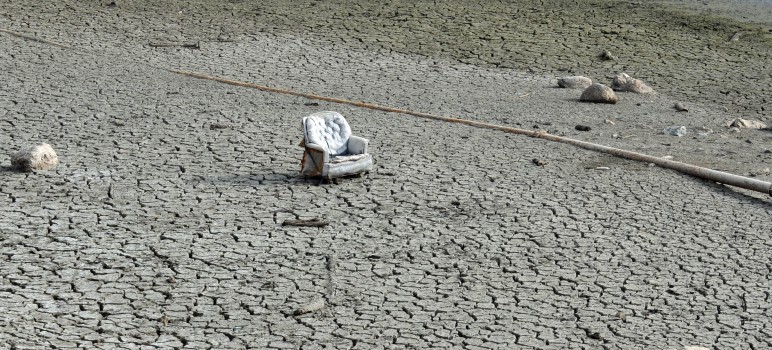
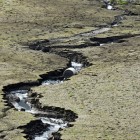
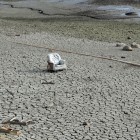
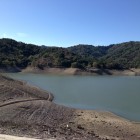

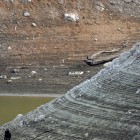

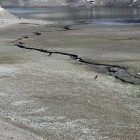

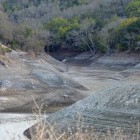
South Bay Water Recycling (SBWR) was started in the ’90’s under the Hammer administration. The rationale for this boondoggle was that treated effluent from the Water Pollution Control Plant (WPCP) was negatively affecting the habitat for the “pickle-weed, Salt Marsh Harvest Mouse and the California Clapper Rail” federally protected species. Environmentalists convinced the Regional Water Quality Control Board to enact a “flow trigger” of no more than 120 million gallons per day (mgd) of treated ffinal effluent to be discharged into the South Bay. Thus, the SBWR was born-not to conserve water but to permit unrestrained growth-primarily residential growth.
The SBWR project siphoned off hundreds of millions of dollars that was squirreled away by the last Director of Water Pollution Control for maintenance and rebuild projects. Millions were wasted studying the effects of treated final effluent on the aforementioned federally protected species, later, it was found that treated final effluent actually enhanced the habitat for the aforementioned species so SBWR was never-ever-needed in the first place. San Jose government officials are aware of this fact but steadfastly refuse to challenge the Regional Water Quality Control Board to vacate their order mandating the flow restrictions. BY the way, if you like to fish for striped-bass, treated final effluent finds its way into the Artesian slough, the mysid shrimp love this stuff and thus fisherman are having a field-day. The fishing spot is so hot I am in a quandry as why the Office of Econoomic Development hasn’t advertised it so the city could make a few bucks.
The SBWR is funded out of your Sewer Service and Use Charge on your property tax and is governed by Proposition 218. San Jose government officials have grossly-miss-used this fund. First, the fund is not equitable, not all residential properties pay the same rate. Single family homes pay the “Lion’s share” high-density projects, apartments, etc., pay much less. Next, remember San Jose government officials knew, from the millions of our dollars studying the effects of treated final effluent, this project was never needed but…they chose to expand SBWR and even to go into partnership with Santa Clara Valley Water District via the Advance Water Treatment Faciltiy (reverse osmosis). In other words, San Jose government officials have thrown the mandates of Proposition 218 into the garbage through the creation of a “water utility” funded directly out of the Sewer Service & Use Charge.
Currently, the cries for reclaimed water are the same cries used in the 90’s-reclaimed water to promote unrestrained residential growth. “Toilet to tap” has been around for decades as well.
The quality of the water is governed by decades old “clean water act standards.” The water has a high salt content ranging anywhere from 700 to 900 mg/L of salt. One must remember this waste water is not only from human waste but it is comingled with industrial waste discharges so don’t get snookered into thinking this water is good.
This is just a snippet of information for you. SBWR from the ’90’s to the present is steeped in controversies of waste, fraud and deception. By the way, the flow of treated fiinal effluent to the Bay is hovering around 90 mgd so far from 120 mgd this project should be shuttered. SBWR has been losing millions of dollars from day one to the present. Also, the salt content will increase due to dual plumbing systems and water conservation methodologies.
What is needed today was also discussed in the 90’s as an alternative to SBWR…a sewer-hook-up moratorium.
Respectfully Mr Wall, I agree on some points, and disagree on others.
I agree that much money has been wasted. Remember those “pictures”? Also, agree, dual water system would be painfully wasteful.
Here’s where I disagree though. I don’t think that finding other methods of water processing would be a waste because there is a need. The entire bay area population just keeps on growing, thus we need more.
On a larger, state wide scale we’re growing. LA is demanding more water to flow south, and we’re digging some huge tunnels up in Sacramento to make this possible. I think it’s entirely possible that we’re going to see the entire bay change because of this.
I think what needs to happen is some sort of an “open source” design for a modular, and cheap desalinization solution. This way we could make LA independent of our water sources, so our natural coastlines and nature returns. One so cheap, that asking the average person like you or myself to sponsor a module wouldn’t be a great financial burden, or require the mountains of bureaucracy that are associated with the current system.
I’m designing a system. I don’t know if it will cut the mustard so to speak, but it is cheap (about $500) and I’m shooting for 10 gallons of drinkable freshwater a day from bay saline, Salt and heavy metals just collect in sealed, negative pressure evaporation tanks that can be fork lifted away and replaced with fresh ones.
Maybe I won’t have it figured out, but we’re a smart area, always have been. Someone will figure it out.
David,
The train has left the station , stop looking back you’ll break your neck.
My neck is far from breaking, I am planning my move from San Jose to either the Oregon coast or the State of Washington.
You and your honorable family members; including your sons and grand-sonons should consider the same.
God Bless-you (and your famiily) for your opinion!
David.
San Luis Reservoir is in West Merced County, not “South County”……………
Mention removed. Thanks,
JK
San Jose actually did something right on this one. Why are you so critical of this program? Australia, Orange County, lots of progressive dry places are treating reclaimed water. Not all growth is bad and is always floors me that those of us who are of a certain age want to stop it after we have arrived. Growth pays for the services that many of us enjoy. Recycled water is the right way to go for everyone, regardless of the reason.
Shut up Meg.